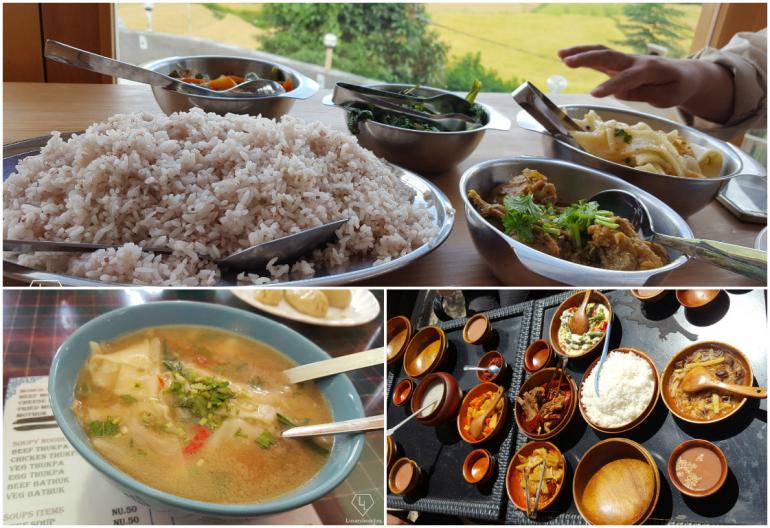
Cities in Bhutan have been hit with a cafe and restaurant craze. This is especially true in Thimphu where you can find Korean, Japanese, Indian, Nepali, Russian and Thai food- just to name a few. With a variety of themes and good ambience, there are no better places to chat with friends or find shelter on a rainy day than one of the many restaurants and cafes in urban areas.

The variety of cafes and restaurants will depend on which area of the country you are in. Thimphu, Paro, Punakha and Phuentsholing cities have much more to offer gastronomically, although this is not the case in rural parts of the country. You can find restaurants to suit every budget. You can expect to pay less than 500 nu (around 6$) per person in budget restaurants. These usually serve traditional meals and popular snack foods like momo (dumpling), juma (sausages) and thukpa (noodles).
Mid-range restaurants can cost upto 1000 nu (around 12$) per person. These usually serve a variety of dishes ranging from Thai, Indian, Chinese and continental. At this budget you can find restaurants serving specialized cuisine like Japanese, Korean and American fast food. Be sure to ask a local for recommendations.

High-end restaurants are less in number and can cost upwards of 2000 nu (around 25$). These restaurants can be identified by their high-end decor and luxurious atmosphere. Some are attached to 4 and 5 star hotel chains. They feature international or fusion food prepared by specialized chefs.
Café culture is also growing in popularity in Bhutanese cities. With a variety of themes and styles, they usually serve coffee, pastries and snacks. Some specialized cafes feature Russian, French and Japanese treats. They are perfect for catching up, working or people-watching.
If you want a change from the traditional fare, you will never be bored with the cafes and restaurants in cities all over the country. Try fusion food, international cuisine or just sip coffee and watch the world go by. Take a break from sightseeing and immerse yourself in the food and drink culture of contemporary Bhutan.
2.Bhutanese drinks

Any good host in Bhutan will not let guests leave their house without having some type of beverage. It is considered rude not to offer anything to someone who has come to visit you. It is equally rude for the visitor to refuse the offer. Here are some of the beverages you can expect to enjoy on your next trip to Bhutan.
The most common drink in Bhutan is tea. Suja is a churned tea made from butter and salt. Ngaja is sweet milk tea, similar to ones found in India. Both teas can be enjoyed with zaw (puffed rice) or sip (pounded corn).

If you’re looking for something a little stronger, you can’t go wrong with ara, a traditional alcohol made by fermenting or distilling rice, wheat, millet, buckwheat, maize or barley. Butter and eggs can also be added for flavor. Banchang and sinchang are made by fermenting grains and yeast.
Aside from traditional alcohols, Bhutan is also known for producing high-quality beer and whiskey. Local beers include Druk 11000, Premium Lager, Red Panda and a variety of lagers including red rice. Popular whiskeys are K5 and Grain Whiskey. You can also find local rum and wine. With the variety of drinks found in Bhutan, you are unlikely to ever go thirsty. Tea and non-alcoholic beverages are served in every house, office and restaurant. Those wanting to try traditional alcohol can visit rural areas, attend a festival or try a homestay. Visitors who want to try local alcohol can find them in any supermarket, pub or bar.
